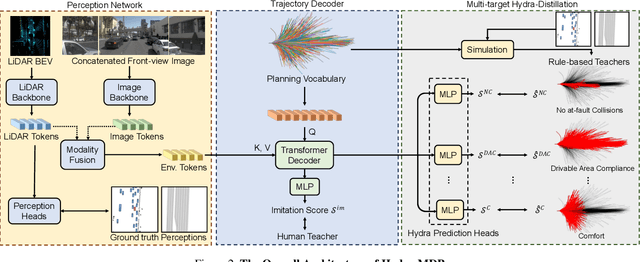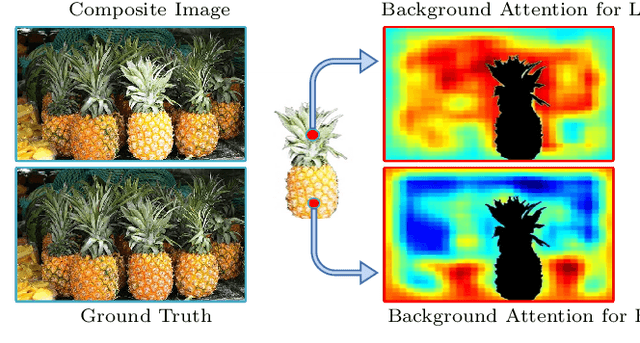Ziyue Zhu
CoGen: 3D Consistent Video Generation via Adaptive Conditioning for Autonomous Driving
Mar 28, 2025Abstract:Recent progress in driving video generation has shown significant potential for enhancing self-driving systems by providing scalable and controllable training data. Although pretrained state-of-the-art generation models, guided by 2D layout conditions (e.g., HD maps and bounding boxes), can produce photorealistic driving videos, achieving controllable multi-view videos with high 3D consistency remains a major challenge. To tackle this, we introduce a novel spatial adaptive generation framework, CoGen, which leverages advances in 3D generation to improve performance in two key aspects: (i) To ensure 3D consistency, we first generate high-quality, controllable 3D conditions that capture the geometry of driving scenes. By replacing coarse 2D conditions with these fine-grained 3D representations, our approach significantly enhances the spatial consistency of the generated videos. (ii) Additionally, we introduce a consistency adapter module to strengthen the robustness of the model to multi-condition control. The results demonstrate that this method excels in preserving geometric fidelity and visual realism, offering a reliable video generation solution for autonomous driving.
Hydra-MDP: End-to-end Multimodal Planning with Multi-target Hydra-Distillation
Jun 11, 2024



Abstract:We propose Hydra-MDP, a novel paradigm employing multiple teachers in a teacher-student model. This approach uses knowledge distillation from both human and rule-based teachers to train the student model, which features a multi-head decoder to learn diverse trajectory candidates tailored to various evaluation metrics. With the knowledge of rule-based teachers, Hydra-MDP learns how the environment influences the planning in an end-to-end manner instead of resorting to non-differentiable post-processing. This method achieves the $1^{st}$ place in the Navsim challenge, demonstrating significant improvements in generalization across diverse driving environments and conditions. Code will be available at \url{https://github.com/woxihuanjiangguo/Hydra-MDP}
Curricular Object Manipulation in LiDAR-based Object Detection
Apr 09, 2023Abstract:This paper explores the potential of curriculum learning in LiDAR-based 3D object detection by proposing a curricular object manipulation (COM) framework. The framework embeds the curricular training strategy into both the loss design and the augmentation process. For the loss design, we propose the COMLoss to dynamically predict object-level difficulties and emphasize objects of different difficulties based on training stages. On top of the widely-used augmentation technique called GT-Aug in LiDAR detection tasks, we propose a novel COMAug strategy which first clusters objects in ground-truth database based on well-designed heuristics. Group-level difficulties rather than individual ones are then predicted and updated during training for stable results. Model performance and generalization capabilities can be improved by sampling and augmenting progressively more difficult objects into the training samples. Extensive experiments and ablation studies reveal the superior and generality of the proposed framework. The code is available at https://github.com/ZZY816/COM.
Co-Salient Object Detection with Co-Representation Purification
Mar 14, 2023Abstract:Co-salient object detection (Co-SOD) aims at discovering the common objects in a group of relevant images. Mining a co-representation is essential for locating co-salient objects. Unfortunately, the current Co-SOD method does not pay enough attention that the information not related to the co-salient object is included in the co-representation. Such irrelevant information in the co-representation interferes with its locating of co-salient objects. In this paper, we propose a Co-Representation Purification (CoRP) method aiming at searching noise-free co-representation. We search a few pixel-wise embeddings probably belonging to co-salient regions. These embeddings constitute our co-representation and guide our prediction. For obtaining purer co-representation, we use the prediction to iteratively reduce irrelevant embeddings in our co-representation. Experiments on three datasets demonstrate that our CoRP achieves state-of-the-art performances on the benchmark datasets. Our source code is available at https://github.com/ZZY816/CoRP.
Image Harmonization by Matching Regional References
Apr 10, 2022



Abstract:To achieve visual consistency in composite images, recent image harmonization methods typically summarize the appearance pattern of global background and apply it to the global foreground without location discrepancy. However, for a real image, the appearances (illumination, color temperature, saturation, hue, texture, etc) of different regions can vary significantly. So previous methods, which transfer the appearance globally, are not optimal. Trying to solve this issue, we firstly match the contents between the foreground and background and then adaptively adjust every foreground location according to the appearance of its content-related background regions. Further, we design a residual reconstruction strategy, that uses the predicted residual to adjust the appearance, and the composite foreground to reserve the image details. Extensive experiments demonstrate the effectiveness of our method. The source code will be available publicly.
 Add to Chrome
Add to Chrome Add to Firefox
Add to Firefox Add to Edge
Add to Edge